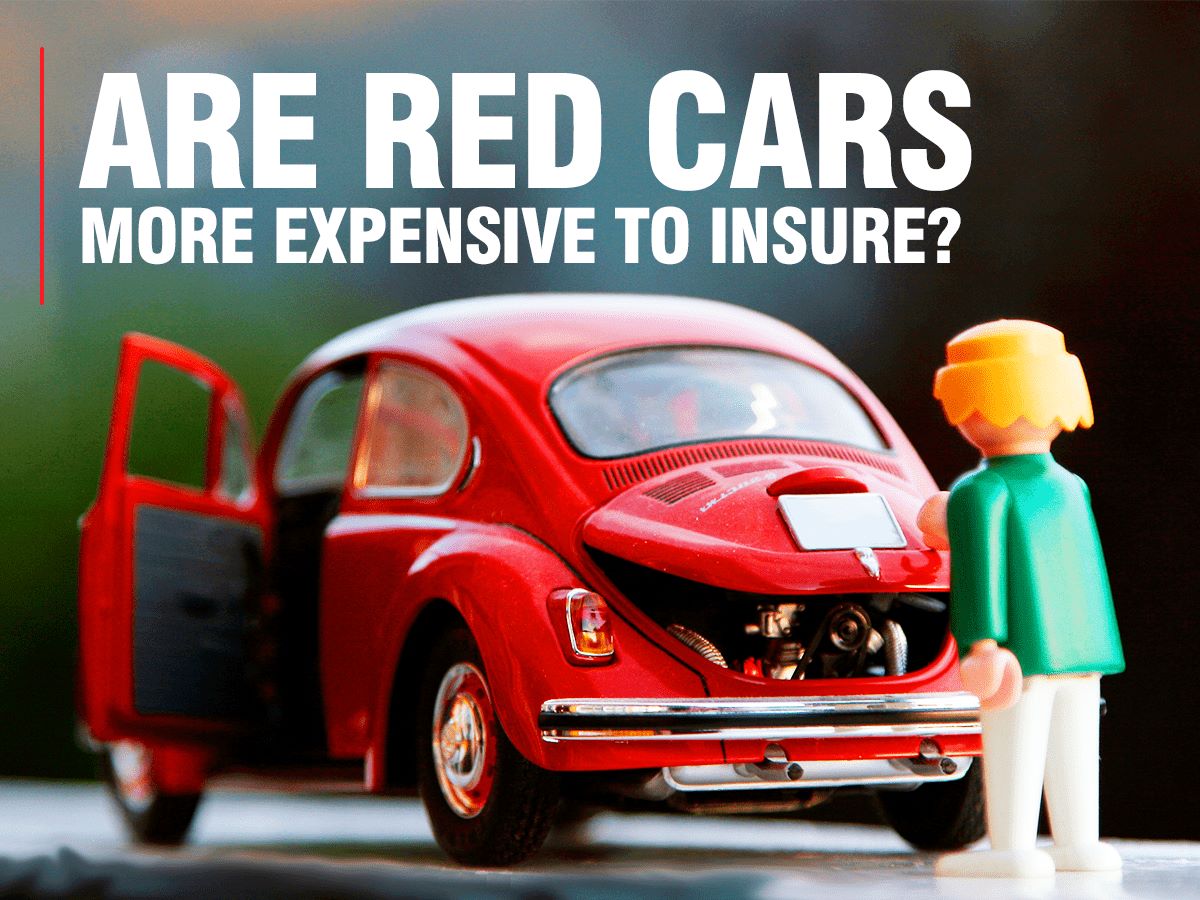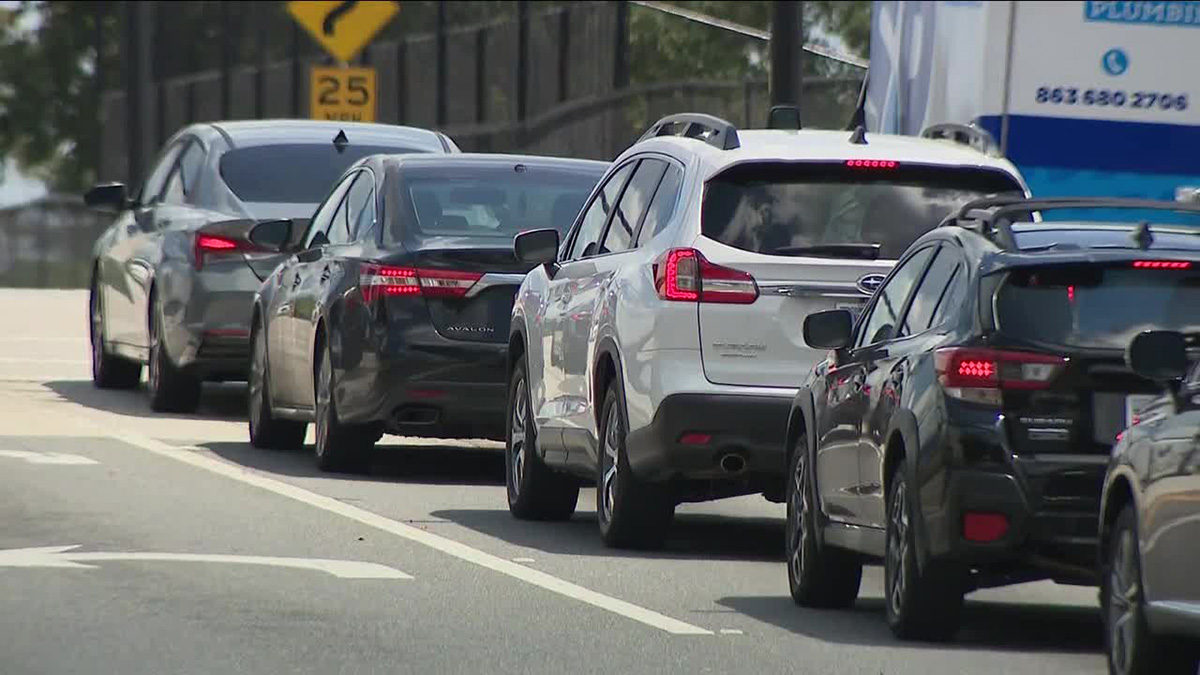

Finance
Why Is Insurance Higher On Red Cars?
Published: November 17, 2023
Discover why insurance premiums are higher for red cars and the impact it has on your finances. Find out how color affects your auto insurance rates.
(Many of the links in this article redirect to a specific reviewed product. Your purchase of these products through affiliate links helps to generate commission for LiveWell, at no extra cost. Learn more)
Table of Contents
- Introduction
- The Perception of Red Cars and Higher Insurance Rates
- The Relationship Between Car Color and Accidents
- The Influence of Car Color on Resale Value
- The Psychological Factors Impacting Insurance Rates for Red Cars
- The Role of Insurance Companies in Determining Premiums
- The Factual Basis for Higher Insurance Rates on Red Cars
- Debunking the Myth: Insurance Rates Based on Risk, Not Car Color
- Conclusion
Introduction
When it comes to car insurance, many people have heard the age-old myth that insurance rates are higher for red cars. This notion has been perpetuated for years, leading some drivers to believe that the color of their vehicle could have a significant impact on their premiums. But is there any truth behind this popular belief, or is it simply a myth?
Insurance companies take various factors into consideration when determining car insurance rates. These factors typically include the driver’s age, location, driving record, and the type of car being insured. While car color may seem like it would fall within the realm of these considerations, the reality is that it has very little, if any, influence on insurance premiums.
In this article, we will explore the perception of red cars and higher insurance rates, the relationship between car color and accidents, the influence of car color on resale value, and the psychological factors that may impact insurance rates for red cars. We will also delve into the role of insurance companies in determining premiums and the factual basis behind higher insurance rates for red cars.
It’s important to address this widespread misconception and debunk the myth that insurance rates are solely determined by the color of a vehicle. By understanding the true factors that impact insurance premiums, drivers can make informed decisions about their car insurance coverage and ensure they are not swayed by falsehoods or urban legends.
The Perception of Red Cars and Higher Insurance Rates
One of the reasons why the belief that red cars have higher insurance rates persists is the perception that red is associated with aggressive or reckless driving. It’s often thought that drivers of red cars are more likely to speed or engage in risky behavior on the roads, leading to a higher risk of accidents. However, this belief is purely based on anecdotal evidence and societal stereotypes, rather than factual data.
The color red has long been associated with speed, power, and danger. This association can be seen in many aspects of our culture, from warning signs to sports cars. It’s no wonder then that the belief that red cars are more prone to accidents and subsequently have higher insurance rates has become ingrained in popular consciousness.
However, it’s crucial to understand that insurance companies do not determine premiums based solely on the color of a car. Instead, they consider objective factors such as the make, model, age, safety features, and repair costs associated with a particular vehicle. These factors have a more direct correlation with the risk of accidents and auto insurance claims.
While it’s true that the perception of red cars being linked to aggressive driving behavior may lead some insurance companies to assume a higher risk, there is no concrete statistical evidence to support this assumption. According to studies conducted by insurance industry experts, car color has no significant impact on accident frequency or severity.
Additionally, insurance companies primarily rely on objective data gathered from claims and accident statistics when determining rates. They are more concerned with factors such as the driver’s age, driving history, location, and the type of vehicle being insured. These factors provide a more accurate assessment of the risk associated with insuring a particular driver, rather than the color of their car.
By dispelling the myth that red cars automatically warrant higher insurance rates, it becomes clear that car color does not play a significant role in determining premiums. Instead, drivers should focus on maintaining a safe driving record, choosing a vehicle with good safety features and a low claims history, and comparing insurance quotes from different companies to find the best coverage at the most competitive rates.
The Relationship Between Car Color and Accidents
While the belief that red cars are more prone to accidents has been debunked, it is still worth exploring the relationship between car color and the likelihood of being involved in an accident. Studies on this topic have found mixed results, with no clear consensus on whether car color influences accident rates.
One study conducted by Monash University in Australia analyzed a large sample of car accidents and found no significant correlation between car color and accident rates. The study concluded that factors such as driver behavior, road conditions, and weather conditions had a far greater impact on accident risk than the color of the vehicle.
However, other studies have suggested that there may be a slight relationship between car color and accident likelihood. For example, a study published in the British Medical Journal found that black cars had a higher risk of being involved in accidents. The researchers hypothesized that this could be due to decreased visibility of black cars, especially at night or in poor weather conditions. Nonetheless, it is important to note that this study focused on one specific color and did not take into account other relevant factors.
It’s worth mentioning that certain studies have also found that light-colored cars may be less likely to be involved in accidents compared to dark-colored cars. The rationale behind this is that light-colored cars are more visible to other drivers, reducing the chances of a collision. However, further research is needed to establish a definitive relationship between car color and accident rates.
Ultimately, it’s essential to recognize that car color is just one of many factors that can influence accident risk. Other factors such as driver behavior, road conditions, and traffic patterns have a far greater impact on the likelihood of being involved in an accident. Therefore, insurance companies primarily focus on these objective factors when determining insurance premiums rather than the color of the vehicle.
Drivers should prioritize safe driving practices, maintain their vehicles in good condition, and be aware of their surroundings to reduce the risk of accidents. It is also crucial to choose a car with good safety features and conduct regular maintenance to ensure optimal safety on the road.
The Influence of Car Color on Resale Value
Car color is often considered an important factor when it comes to the resale value of a vehicle. Many car buyers have preferences for certain colors, and these preferences can vary based on cultural and regional factors. However, the impact of car color on resale value is not as clear-cut as one might think.
Studies have shown that certain colors may have a slight influence on resale value, but the effect is generally minimal. Popular colors such as white, black, and silver are often considered safe choices with broad appeal, while more unique or bold colors may appeal to a smaller segment of the market.
One factor that can affect resale value is the overall condition of the car. Buyers are typically more interested in the condition of the paintwork rather than the specific color. A well-maintained car with any color will generally have a higher resale value than a car with faded or damaged paint, regardless of its color.
It’s also worth noting that car color preferences can change over time. Colors that are trendy and popular today may not be as desirable in the future. As a result, car color should not be the sole determining factor when considering the resale value of a vehicle.
Ultimately, factors such as the make, model, mileage, condition, and maintenance history of a car have a much more significant impact on resale value than its color. Buyers are typically more concerned with the overall quality and reliability of the vehicle rather than its specific hue.
When it comes to choosing the color of your car, it’s best to select a color that you personally enjoy and feel confident driving. While it’s true that popularity may impact potential buyers down the line, it’s also important to enjoy the car while you own it. In the end, the resale value of a vehicle is influenced by numerous factors, and car color is just one small piece of the puzzle.
The Psychological Factors Impacting Insurance Rates for Red Cars
While car insurance rates are not directly influenced by the color of a vehicle, there are some psychological factors that may indirectly impact insurance rates for red cars. These factors are rooted in human perception and societal stereotypes, rather than empirical data.
One psychological factor is the association between the color red and risk-taking behavior. Red is often associated with danger, passion, and aggression. These associations can subconsciously influence how people perceive red cars on the road. As a result, insurance companies may assume that drivers of red cars are more likely to engage in risky driving behavior, leading to higher insurance rates.
Another psychological factor is the “availability heuristic,” which refers to the tendency of humans to rely on immediate examples and personal experiences when assessing risk. If a person recalls a particular incident involving a red car, such as a high-speed chase or a reckless driver, they may generalize this experience and assume that all red cars are more likely to be involved in accidents. This cognitive bias can further perpetuate the perception that red cars have higher insurance rates.
Societal stereotypes can also impact the perception of red cars and insurance rates. Media portrayals of fast sports cars often feature red vehicles, further linking the color with speed and risk-taking behavior. Additionally, anecdotal stories and word-of-mouth misinformation can contribute to the widespread belief that red cars attract higher insurance premiums.
However, it’s important to note that these psychological factors are not based on factual data or actuarial analysis. Insurance companies base their rates on objective factors that have been proven to correlate with accident risk, such as driving history, age, and location. While it is possible that some insurance companies may have internal policies that associate higher risk with red cars, it is not a widespread industry practice.
It’s crucial for drivers to understand that insurance rates are primarily determined by statistical evidence rather than subjective perceptions. By focusing on objective factors related to their driving history and the type of car they own, drivers can make informed decisions about their insurance coverage and ensure they are not influenced by unfounded beliefs about car color and insurance rates.
Ultimately, maintaining a safe driving record, practicing defensive driving techniques, and adhering to traffic laws are the most effective ways to secure affordable insurance rates, regardless of the color of your car.
The Role of Insurance Companies in Determining Premiums
Insurance companies play a crucial role in determining premiums for auto insurance policies. Premiums are the amount policyholders pay for coverage, and they are calculated based on various factors that help assess the level of risk associated with insuring a particular driver and their vehicle.
Insurance companies use actuarial analysis and statistical models to assess risk. These models take into account objective factors such as the driver’s age, gender, driving history, location, and the type of car being insured. By analyzing historical data and patterns, insurance companies can estimate the likelihood of a driver filing a claim and determine the appropriate premiums.
One of the primary factors insurance companies consider is the driver’s past driving record. A driver with a clean record and no history of accidents or violations is generally considered a lower risk and may qualify for lower premiums. On the other hand, a driver with a history of speeding tickets or at-fault accidents may be perceived as a higher risk and face higher premiums.
In addition to the driver’s record, insurance companies also consider the type of vehicle being insured. Factors such as the make, model, age, safety features, and cost of repairs all contribute to the risk assessment. Cars with high safety ratings and those equipped with advanced safety features are generally considered lower risk and may result in lower insurance premiums.
Insurance companies also take into account the location where the insured vehicle will be primarily used. The level of risk associated with different geographic areas can vary based on factors such as traffic density, crime rates, and weather conditions. Areas with higher accident rates or higher incidents of theft may result in higher insurance premiums.
Moreover, insurance companies constantly review their claims data and update their risk models to ensure accurate pricing. As new data becomes available and trends change, premiums may be adjusted accordingly. This allows insurance companies to stay competitive and provide accurate pricing based on the latest information.
It’s important for drivers to understand that insurance companies aim to strike a balance between providing fair premiums and ensuring their financial stability. Premiums are determined by complex algorithms that take into account a wide array of risk factors, rather than subjective factors such as the color of the insured car.
By being aware of the factors that insurance companies consider when determining premiums, drivers can make informed decisions about their coverage and take steps to reduce their risk profile. This may include maintaining a safe driving record, choosing a safe and reliable vehicle, and exploring discounts or incentives offered by insurance companies.
The Factual Basis for Higher Insurance Rates on Red Cars
Contrary to popular belief, there is no factual basis for higher insurance rates on red cars. Insurance companies do not base their premiums solely on the color of a vehicle. Instead, they rely on objective factors that have been proven to correlate with accident risk and insurance claims.
Insurance companies determine premiums based on statistical data and actuarial analysis. They analyze historical accident records, claims data, and other relevant factors to assess risk accurately. Objective factors such as the driver’s age, driving history, location, and the type of car being insured are the primary drivers behind insurance rates.
The color of a car, including red, has no direct impact on the likelihood of accidents or insurance claims. While it’s true that red cars may attract more attention on the road due to their visibility, this does not automatically translate into a higher risk of accidents. In fact, studies have shown that car color has no significant correlation with accident rates.
Insurance companies focus more on objective factors that have been proven to affect accident risk. They consider the driver’s behavior, such as their driving history and any previous accidents or violations. They also take into account the type of car being insured, including safety features, repair costs, and the car’s history of claims.
It’s important to dispel the misconception that red cars are automatically associated with higher insurance rates. The belief likely stems from societal stereotypes and anecdotal perceptions, rather than factual evidence. Insurance companies base their premiums on solid statistical data and actuarial analysis, rather than subjective factors such as car color.
By understanding that insurance rates are determined by objective risk factors, rather than the color of a car, drivers can make informed decisions when purchasing insurance coverage. They can focus on maintaining a safe driving record, choosing a vehicle with good safety features, and comparing quotes from different insurance companies to find the best coverage at competitive rates.
It’s essential to rely on accurate information and factual data when it comes to assessing insurance rates. By doing so, drivers can avoid falling prey to myths and misconceptions surrounding the impact of car color on insurance premiums.
Debunking the Myth: Insurance Rates Based on Risk, Not Car Color
It’s time to debunk the persistent myth that insurance rates are based on the color of a vehicle. Insurance companies determine premiums based on risk assessment, not the hue of your car’s exterior. Despite the common belief that red cars automatically result in higher insurance rates, there is no factual basis to support this notion.
Insurance companies use actuarial analysis and statistical modeling to evaluate risk factors associated with each policyholder. They consider objective criteria such as the driver’s age, driving record, geographical location, and the type of car being insured. These factors have been proven to impact the likelihood of accidents and insurance claims.
The color of a car, including red, is not included as a risk factor in insurance rate calculations. Insurance companies focus on relevant data that can objectively measure risk, such as the driver’s accident history and driving habits. The make, model, year, safety features, and past claims of a vehicle are also taken into account since they have a direct correlation to potential accidents and repair costs.
Claims statistics and accident records, not car color, shape insurance rates. Insurance companies allocate premiums based on the probability of a driver filing a claim, not the visibility or perceived aggression associated with a red car. By relying on empirical data, insurers aim to provide accurate pricing that reflects the actual risk involved in insuring each individual and their vehicle.
It’s important to separate fact from fiction and dispel the myth that car color alone determines insurance rates. Believing this myth can lead to unnecessary worry and influence your decision-making when purchasing a car. Instead, focus on factors that truly impact your insurance premiums, such as your driving record and the characteristics of the vehicle you choose.
By understanding that insurance rates are based on risk assessment and data-driven calculations, drivers can make informed decisions when it comes to their insurance coverage. Focus on maintaining a clean driving record, practicing safe driving habits, and comparing quotes from different insurance providers to find the most suitable coverage at the best possible rates.
Remember, insurance rates are not influenced by the color of your car but rather by factors that demonstrate your level of risk on the road. So, drive safely and choose the car that suits your needs and preferences, regardless of its color.
Conclusion
After exploring the belief that insurance rates are higher for red cars, it becomes clear that this is just a myth. Car color has no significant impact on insurance premiums. Insurance companies determine rates based on objective factors such as driving history, location, and the type of vehicle being insured.
While the perception of red cars being associated with aggressive driving behavior persists, there is no factual basis for this belief. Studies have shown that there is no direct correlation between car color and accident rates. Insurance companies prioritize statistical data and actuarial analysis when determining premiums, rather than relying on societal stereotypes.
Furthermore, the influence of car color on resale value is minimal. Buyers are more concerned with the overall condition, make, model, and maintenance of a car rather than its specific hue. Other factors like market trends and personal preferences play a larger role in determining resale value.
Debunking the myth that insurance rates are based on car color is important for drivers to make informed decisions about their insurance coverage. By focusing on maintaining a clean driving record, choosing a vehicle with good safety features, and comparing quotes from different insurers, drivers can secure affordable insurance rates regardless of their car’s color.
It’s crucial for drivers to understand that insurance rates are primarily based on risk factors supported by statistical evidence, rather than subjective beliefs or urban legends. By relying on accurate information, drivers can navigate the insurance marketplace with confidence and find the coverage that best suits their needs and budget.
Remember, insurance rates are determined by objective criteria, not the color of your car. So, drive safely, choose a car based on your preferences and needs, and secure the insurance coverage that provides the adequate protection you require on the road.














